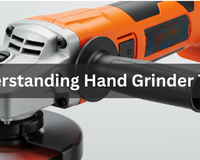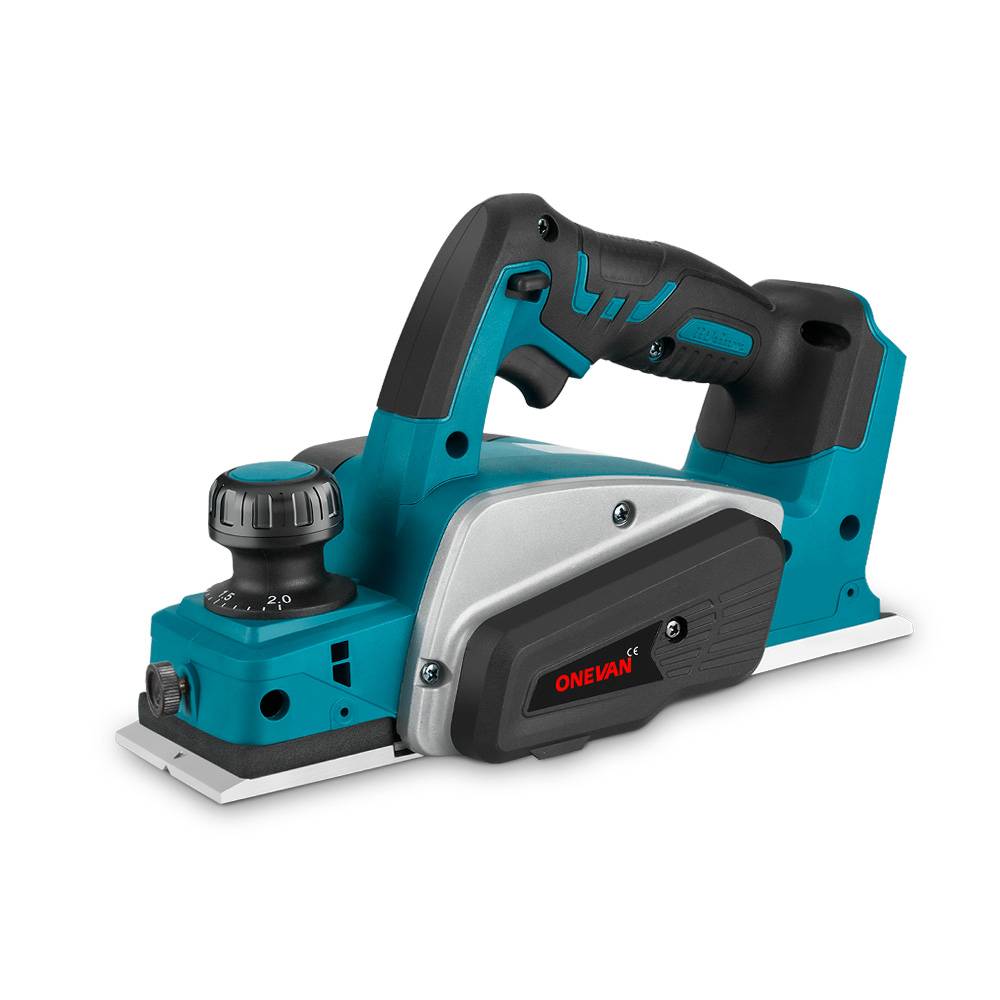You are about to start learning about circular saws. This tool is very powerful and can make many woodworking and construction jobs much simpler. However, picking the right circular saw is a big choice. It is important to know that getting the correct size and type of circular saw makes your work safer. Additionally, it helps you work much better.
When you ask, "What size circular saw should I need?" or "How big of a circular saw do I need?", you are asking key questions. These questions will show you the best tool for your work. Meanwhile, this is true if you build shelves in your home. Similarly, it is also true if you frame a new house.
This guide will help you consider all your options. Eventually, it will ensure you make wise choices. This choice will fit what you need and what you can do. Before you can find the best circular saw for your needs, it helps to understand these strong tools.
1. Understanding Common Circular Saw Sizes
The size of a circular saw depends on its blade diameter. This measurement tells you how deep the saw can cut. Furthermore, it also shows you what types of projects work best with each size.
4-1/2 Inch (114 mm) Circular Saw
Features
These small circular saws are very light and easy to handle. Nevertheless, they use smaller motors but still provide good cutting power. You will find them perfect for detailed work. Moreover, they also work well when you need to make many cuts quickly.
Cut Depth
A 4-1/2 inch circular saw cuts about 1-1/2 inches deep at 90 degrees. This depth works for many thin materials. Besides, it handles most trim work very well.
Applications
This size is perfect for cutting trim boards. You can use it for small craft projects. Additionally, it also works great for cutting thin plywood sheets. If you wonder, "What size circular saw do I need for light work?", a 4-1/2 inch saw is probably your answer.
5-3/8 Inch (136 mm) Circular Saw
Features
This size gives you more cutting power than the smallest saws. Still, it stays light enough for easy handling. You get better depth while keeping good control. The motor provides more torque for tougher cuts.
Cut Depth
A 5-3/8 inch blade cuts about 1-7/8 inches deep. This depth handles most standard lumber sizes. Therefore, it cuts through 2x4 boards in one pass.
Applications
This size works well for general home projects. You can cut deck boards with it. Likewise, it handles fence construction very well. It also works for most DIY furniture projects.
6-1/2 Inch (165 mm) Circular Saw
Features
This size offers a good balance of power and control. It provides more cutting depth than smaller saws. The motor has enough power for most home projects. Meanwhile, you still get easy handling for overhead cuts.
Cut Depth
A 6-1/2 inch saw cuts about 2-1/4 inches deep at 90 degrees. This depth cuts through most standard framing lumber. Thus, it handles 2x6 boards with no problem.
Applications
This size is great for home renovations. You can cut the subflooring with it. It works well for cabinet making. Equally important, it also handles most roofing projects very well.
7-1/4 Inch (184 mm) Circular Saw
Features
The 7-1/4 inch circular saw is among the most popular sizes for contractors. It provides excellent cutting power. The motor handles tough materials easily. This size gives you the best mix of power and portability.
Cut Depth
This blade size cuts about 2-1/2 inches deep. This depth handles all standard framing lumber. Indeed, it cuts through double 2x4 boards stacked together.
Applications
This size is perfect for house framing. You can use it for large construction projects. It handles thick plywood sheets very well. If you ask, "What is the best circular saw to buy for most projects?", the 7-1/4 inch size is often the answer.
8-1/4 Inch (209 mm) Circular Saw
Features
This larger size provides serious cutting power. The motor handles very tough materials. You get deeper cuts than smaller saws. Although the weight increases, the cutting ability also improves significantly.
Cut Depth
An 8-1/4 inch blade cuts about 2-3/4 inches deep. This depth handles thick beams easily. It cuts through engineered lumber without problems.
Applications
This size works great for heavy construction. You can cut thick beams with it. It handles large deck projects very well. Also, it works for cutting thick composite materials.
10-1/4 Inch (260 mm) and Larger Circular Saw
Features
These are the largest portable circular saws. They provide maximum cutting power. The motors are very strong. These saws handle the toughest cutting jobs.
Cut Depth
A 10-1/4 inch saw typically cuts over 3-1/2 inches deep. This depth cuts through very thick materials. It handles large beams in one pass.
Applications
This size is for professional construction work. You use it for cutting large timbers. It works well for industrial projects. It also handles very thick engineered lumber.

2. Choosing the Right Circular Saw Based on Project Needs
Small DIY Projects with a Circular Saw
Recommended Size
These sizes give you the control you need. They also provide enough power for most small jobs.
Ideal Materials
You will typically cut thin wood boards, such as trim pieces (like baseboards) and craft lumber (such as balsa wood). You might also cut thin plywood sheets. Small plastic materials also work well with these sizes.
Example Projects
You can build small shelves with these saws. They work great for picture frames. You can also use them for small garden projects. Craft projects also benefit from these smaller sizes.
Why This Size Works
Small saws are easier to control. They make precise cuts more easily. The lighter weight reduces fatigue. You can work longer without getting tired. This makes your DIY projects more enjoyable.
Home Renovations and Medium Projects with a Circular Saw
Recommended Size
For home renovations, a 6-1/2 inch to 7-1/4 inch circular saw is ideal. These sizes handle most renovation tasks. They provide good power while staying manageable.
Ideal Materials
You will cut standard lumber,such as 2x4s and 2x6s. Plywood sheets are common in renovations. You might also cut some composite decking materials. These saws handle laminated boards very well.
Example Projects
Kitchen cabinet installation works well with these sizes. Bathroom renovations benefit from this cutting power. Deck building projects use these saws frequently. Room additions also require this level of performance.
Why This Size Works:
These sizes cut through most building materials easily. They provide enough power for all-day use. For home renovation projects, consider using a high-quality 7-1/4 inch saw, such as the ONEVAN 180mm 7 Inch Brushless Cordless Circular Saw. You get professional results without the weight of a professional.
Large Construction and Framing Projects with a Circular Saw
Recommended Size
For large construction, you need 7-1/4 inch to 8-1/4 inch circular saws. These sizes provide the power for demanding work. They handle thick materials without slowing down.
Ideal Materials
You will cut heavy framing lumber, such as 2x8s and 2x10s. Thick plywood and OSB sheathing are common. You might also cut engineered lumber and LVL beams. These saws can handle pressure-treated lumber, but it's essential to use the appropriate blade designed for dense materials to ensure smooth cutting.
Example Projects
House framing requires this level of power. Large deck construction uses these saws heavily. Commercial building projects need this performance. Roof construction also benefits from these powerful saws.
Why This Size Works
Large projects demand consistent power. These saws are designed to maintain speed through thick cuts. They reduce the number of passes needed. This saves time on big jobs. Professional contractors rely on this performance level.
3. Factors to Consider When Choosing a Circular Saw
Skill Level and Experience of Circular Saw Users
Beginner Users
If you are new to circular saws, starting with a 4-1/2 inch or 6-1/2 inch size can be beneficial, as the smaller saw is lighter and easier to control, while the larger provides more versatility without being overwhelming.
Experienced Users
Once you have some experience, a 7-1/4 inch saw becomes very useful. You understand how to handle more power safely. This size handles most projects you will encounter. It gives you room to grow your skills.
Professional Users
Professional users often choose 7-1/4 inch to 8-1/4 inch saws. These sizes provide the power for demanding work. They handle all-day use without problems. The ONEVAN 180mm Brushless Cordless Circular Saw offers professional-grade performance in these sizes.
Types of Materials That Can Be Cut with a Circular Saw
1. Wood Materials
Wood materials are the most common cutting application. This includes solid wood, plywood, laminated boards, particleboard, composite wood, and wood-plastic composites. Different wood types require different approaches.
Recommended Blades
Use carbide-tipped blades for most wood cutting; however, consider using fine-tooth blades for plywood and coarse-tooth blades for rough lumber to ensure optimal cut quality. The blade choice affects cut quality significantly.
2. Plastic Materials
Plastic cutting requires special consideration. This includes polyethylene (PE), polypropylene (PP), PVC, and acrylic materials. The cutting speed affects the quality.
Recommended Blades
Use fine-tooth blades for smooth cuts, particularly when working with plywood or other delicate materials that require a clean finish.
Keep cutting speeds moderate to prevent melting. Support the material well to prevent cracking.
3. Metal Materials
Metal cutting expands your saw's usefulness. This includes aluminum sheets, copper sheets, thin steel plates, stainless steel (limited), and aluminum alloys. Safety becomes even more important when cutting metal; always wear gloves, safety glasses, and a face shield to protect against metal shavings and sparks.
Recommended Blade
Use metal-cutting blades specifically designed for circular saws. Cut slowly to prevent overheating. Use cutting fluid when possible.
4. Masonry and Stone Materials
Masonry cutting requires special blades and techniques. This includes concrete, bricks, tiles, and stone materials. Dust control becomes very important when cutting masonry. Use appropriate dust extraction systems or wet cutting methods to minimize dust inhalation and maintain a clean workspace.
Recommended Blades: Use diamond-tipped masonry blades. Make sure your saw has enough power. Always use proper dust protection.
5. Concrete and Brick
Concrete and brick cutting is demanding work. Your saw needs enough power to maintain speed. The blade must be designed for masonry.
Recommended Blades
Diamond blades work best for concrete. Segmented blades handle rough cutting. Continuous rim blades give smoother cuts.
6. Ceramics and Tiles
Ceramic and tile cutting requires precision. The blade must be very sharp. Support is critical to prevent cracking.
Recommended Blades
Use diamond blades designed for ceramics and other hard materials. Cut slowly for best results. Score deeply before completing the cut.
Power Source of a Circular Saw
Corded Circular Saw Advantages
Corded saws provide unlimited runtime as long as they are plugged into a power source, making them ideal for stationary work but limiting portability. They maintain consistent power throughout use. The power is usually higher than that of cordless circular saw. They cost less than comparable cordless circular saws. You never worry about battery life during long projects.
Cordless Circular Saw Advantages
Cordless circular saw offer complete mobility. You can work anywhere without power outlets. They are usually lighter than corded models. The ONEVAN 125mm Brushless Cordless Circular Saw provides excellent portability. You get freedom from extension cords and power limitations.
Gas Circular Saw Advantages
Gas saws provide maximum power for heavy work. They work in remote locations without electricity. The runtime is excellent with fuel refills. They handle the most demanding cutting applications.
Budget and Value of a Circular Saw
|
Saw Size |
Corded Price Range |
Cordless Price Range |
Gas Price Range |
Best Value For |
|
4-1/2 Inch (114 mm) |
$40-$80 |
$60-$120 |
Not Available |
Light DIY work |
|
5-3/8 Inch (136 mm) |
$50-$100 |
$80-$150 |
Not Available |
Small projects |
|
6-1/2 Inch (165 mm) |
$60-$120 |
$100-$200 |
Not Available |
Home renovation |
|
7-1/4 Inch (184 mm) |
$80-$200 |
$150-$350 |
$300-$600 |
Most projects |
|
8-1/4 Inch (209 mm) |
$100-$250 |
$200-$400 |
$400-$700 |
Heavy construction |
|
10-1/4 Inch (260 mm) and Larger |
$150-$400 |
$300-$600 |
$500-$900 |
Professional use |
The price ranges show you what to expect for different quality levels. Higher prices usually mean better motors and longer life. Consider how often you will use the saw. This helps you decide how much to spend.
4. Conclusion
The complexity of the projects you plan determines the size you should choose. The projects you plan and their complexity determine the size you should choose. Your skill level affects what size you can handle safely. The materials you cut influence the power you need. Remember that a 7-1/4 inch circular saw handles most home and professional projects. This size provides the best balance for most users.
5. FAQs
Can I use a smaller saw for larger projects effectively?
You can use a smaller circular saw for larger projects, though it requires more work. A smaller saw means you might need to make multiple passes through thick materials. For instance, a 6-1/2 inch saw cannot cut through a 2x8 board in one pass. You would need to cut from both sides. This takes more time and requires careful alignment. The cuts might not be as smooth as single-pass cuts. However, smaller saws work fine if you plan extra time. They also work well when you need better control for detailed work. Consider your project timeline when choosing saw size.
How do I maintain my circular saw for optimal performance?
Proper maintenance keeps your circular saw working well for many years. First, keep the blade sharp and clean. A dull blade increases friction and resistance during cuts, requiring the motor to work harder and potentially leading to overheating, rough cuts, and an increased likelihood of kickback. Clean sawdust from the motor vents after each use. This prevents overheating problems. Check the blade guard to make sure it moves freely. Oil the guard pivot points if they get sticky.
For cordless circular saw, store batteries in a cool, dry place. Charge them regularly, even when not in use. Replace worn brushes in brushed motors when performance drops. Store your saw in a dry location to prevent rust, and consider using a protective cover to shield it from dust and moisture, especially for metal components.
How to change circular saw blades?
Changing a circular saw blade is a basic but important skill. First, unplug the saw or remove the Li-Ion battery for safety. Then, locate the blade lock button and the arbor bolt. Press the blade lock while turning the blade by hand until it engages. Use the wrench that came with your saw to loosen the arbor bolt. Remember that most bolts turn in the opposite direction to the blade rotation. Remove the outer washer and old blade carefully. Install the new blade with teeth pointing in the rotation direction. Replace the washer and tighten the bolt firmly. Always check that the blade is properly seated before use.
How to cut straight with a circular saw?
Cutting straight lines with a circular saw requires good technique and sometimes a guide. Start by marking your cut line clearly on the material. Set the saw depth to just barely go through the material. This gives you better control and cleaner cuts. Use the saw's built-in guide notch to follow your marked line. For long cuts, clamp a straight edge to the material as a fence. Keep the saw's base plate firmly against this guide. Move the saw at a steady, moderate speed. Let the blade do the work without forcing it. Practice on scrap material to develop your technique.
How to properly use a circular saw?
Proper circular saw use starts with safety preparation. Always wear safety glasses, hearing protection, and a dust mask. Ensure that the workpiece is securely clamped and that you follow all safety protocols before operating the saw. Make sure your work area is clean and well-lit. Set the blade depth to just go through the material plus 1/4 inch. This setting gives cleaner cuts and better safety.
Start the saw before the blade touches the material. Guide the saw along your cut line at a steady pace. Do not force the saw or twist the blade. Let the blade complete its cut before setting the saw down. Always wait for the blade to stop completely before changing position.
How to cut a 45-degree angle with a circular saw?
Cutting 45-degree angles requires adjusting your saw's bevel setting. Most circular saws have a bevel adjustment that tilts the base plate. Loosen the bevel lock and tilt the saw to 45 degrees. Many saws have a positive stop at 45 degrees for accuracy. Tighten the lock securely before cutting. Mark your cut line clearly since the angled cut changes how you see the blade path. Support the material well since angled cuts can cause binding. Cut slowly and steadily to maintain accuracy. Check your angle with a square after cutting to verify accuracy. Practice on scrap material first.
How to cut plexiglass with a circular saw?
Cutting plexiglass with a circular saw requires special care to prevent cracking. Use a fine-tooth blade designed for plastic or laminate. A blade with 60-80 teeth works well. Set the saw to run at a moderate speed if possible. High speeds can melt the plastic. Support the plexiglass well on both sides of the cut. Use a straight edge as a guide for accuracy. Cut slowly and steadily without stopping. Stopping can cause the blade to melt the plastic. Keep the protective film on the plexiglass during cutting. This prevents scratches and helps you see cut lines. Clean the cut edge with fine sandpaper if needed.
How to rip a board with a circular saw?
Ripping a board means cutting along its length, parallel to the grain. This requires a rip fence or guide system for accuracy. Many circular saws come with an adjustable rip fence. Set the fence to the desired width from the blade. Make sure the fence stays parallel to the blade. For wider rips, use a clamped straight edge as a guide. Mark the start and end points of your cut clearly. Support long boards well to prevent sagging. Start the cut and maintain steady pressure against the fence. Do not force the saw if it binds. Back out and restart if necessary.
Which way does a circular saw blade go?
The circular saw blade teeth must point in the direction of rotation. For most circular saws, this means the teeth point downward at the front of the saw. Look for arrows on the blade and the saw guard that show the correct direction. The blade rotates toward you when you hold the saw normally. Installing the blade backward will not cut properly and is dangerous. The blade package usually shows an arrow indicating the rotation direction. When installing, make sure this arrow points the same way as the saw's rotation arrow. Always double-check blade direction before tightening the arbor bolt. A correctly installed blade cuts smoothly and safely.









